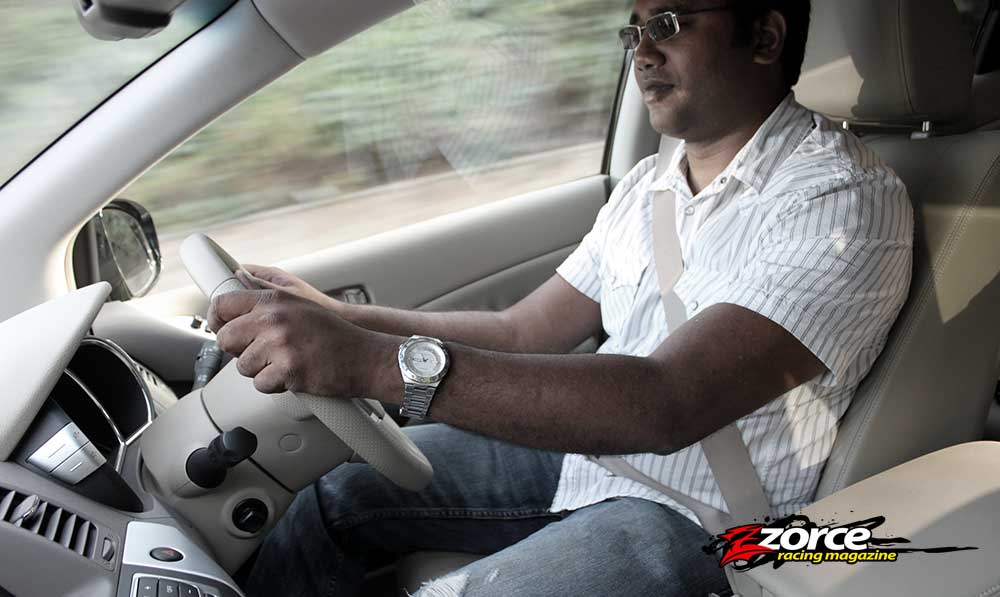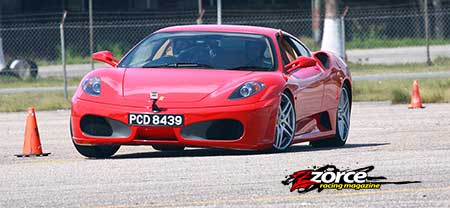Driving luck with ‘dex
- Written by Narend Sooknarine
- Published in What Narend Say

Lots of people get into accidents. While some are serious, most people have experienced the ubiquitous fender bender. Although circumstances are varied and at times even extraordinary there are ways that you can improve your chances of avoiding an accident, and the ensuing hassle of reporting, repairing and processing your insurance claim.
Firstly keeping your car in good working order is a great idea for a number of reasons. Good working lights means that people know when you’re indicating to turn, stopping, parked or coming their way. Reliable brakes are an absolute must. Proper tires mean that your car can accelerate away from danger, brake in time for a traffic light, pedestrian or obstacle or execute an emergency maneuver. Proper tire tread depth gives you significantly better wet handling which includes all of the scenarios outlined above. People often neglect suspension components because jobs can be expensive or time consuming but working shock absorbers keep tires planted on the road especially when hitting minor bumps and road imperfections. Bad shock absorbers also allow a car to bounce and wallow making it harder to drive at all but the slowest pace. Steering components like rack ends and ball joints should also be kept in good condition. A broken ball joint will allow the wheel to move completely out of place and render the car un-drivable and a wrecker will be required since the solution of calling your brother or friend and telling them “bring rope” won’t help if you can’t steer. Generally all of these problems can be nipped in the bud before they become too serious, allowing you enough time to source parts and service and funds to keep your car safe and performing at its best.
But let’s take another approach to improving your chances of avoiding an accident on the road and considering yourself as lucky as possible. In addition to keeping the car in proper working order, there is one key part of the equation that can also be worked on– the nut behind the wheel. Many of us pride ourselves as good drivers by sheer virtue of how long we have been driving. And while we settle into properly forgetting every regulation stipulated, we soon replace them with our version of road logic. How many times has the person flying by been called the “speeding lunatic” and when we are doing the same thing everyone else becomes “the slow idiot in the passing lane”. Many drivers today take unnecessary chances, breaking stoplights and the list goes on.
However, there are times when we are genuinely behaving ourselves and something grossly unexpected happens– a car crosses the median, a mysterious new pothole appeared within the last 24 hours, a tire blows out or a person or pet runs out on to the roadway. Lots of things can happen. In fact, I’ll share one such experience. My sister and I were returning home one night in my mom’s car, approaching a bridge. A car was coming through the corners ahead at a good pace, however the driver opted to hog the road and took a line of trajectory through the bridge that would hit us head on. The only way to avoid being hit was to go off road, which we did partially, hanging the two left tires into the dirt. The oncoming car flew past and as we came back on to the road, our car skidded twice, with the rear end swinging right and left again before settling down again, just in time to cross the bridge. This all took place in a simple front-wheel-drive 1.5-litre automatic car, with the a/c on at 60km/h or less. The point is, you don’t have to be driving a fast car or be above the speed limit to be at risk– regular cars at regular speeds with normal drivers can also be affected by the unpredictable.
But, did you know that there is a way that you can sharpen your driving skills and reflexes (in the dry and occasionally in the wet) and explore the limits of your car safely? It is positively beneficial and very competitive. It is an entry-level form of motorsport known as Solodex, or Solo Dexterity. Also known as autocrossing in the US, Solodex is run in Trinidad & Tobago by a group called CARS or Creative Auto Recreational Sports. The basic activity is actually very close to defensive driving training. Traffic cones are used in at large venues like car parks to define the racecourse.  At each meet a new course is set up which drivers have never driven on before so the skill is not only in how well you can drive but also how well you can read the road. Speeds are generally limited to 100km/h or less but courses are packed with sweeping corners, tight and tricky sections, decreasing radius and hairpins to give the crowd some added excitement. Each single car run is electronically timed using start and finish sensors and a two second penalty is added for each cone knocked over. That means you can’t just go romping through and skidding about, in fact the neatest runs are typically the fastest. From the outside it seems boring but one ride in the passenger’s seat will allow you to see just how much work it takes to drive the car at the limits and not hit any cones. Of course, to be eligible to enter, your car must pass a practical inspection test. Did I mention it was a lot of fun too?
At each meet a new course is set up which drivers have never driven on before so the skill is not only in how well you can drive but also how well you can read the road. Speeds are generally limited to 100km/h or less but courses are packed with sweeping corners, tight and tricky sections, decreasing radius and hairpins to give the crowd some added excitement. Each single car run is electronically timed using start and finish sensors and a two second penalty is added for each cone knocked over. That means you can’t just go romping through and skidding about, in fact the neatest runs are typically the fastest. From the outside it seems boring but one ride in the passenger’s seat will allow you to see just how much work it takes to drive the car at the limits and not hit any cones. Of course, to be eligible to enter, your car must pass a practical inspection test. Did I mention it was a lot of fun too?
Drivers who spend a year in Solodex often feel vastly more confident in their ability as well as supremely aware of their car’s limits. I know if I didn’t have the practical experience from driving at “dex” I might have been able to tell you how a bridge tastes, with my foot holding the pen– not that I ever want to. Lucky me I guess…

